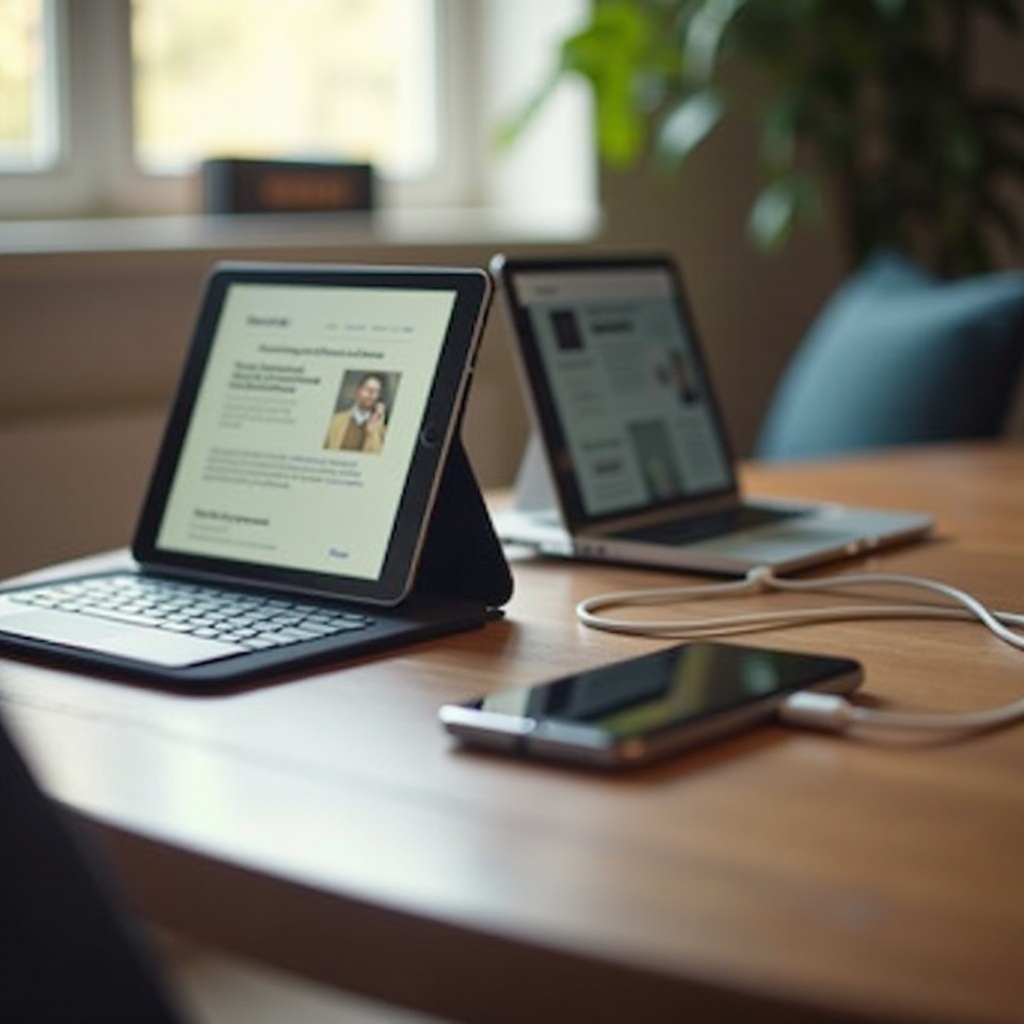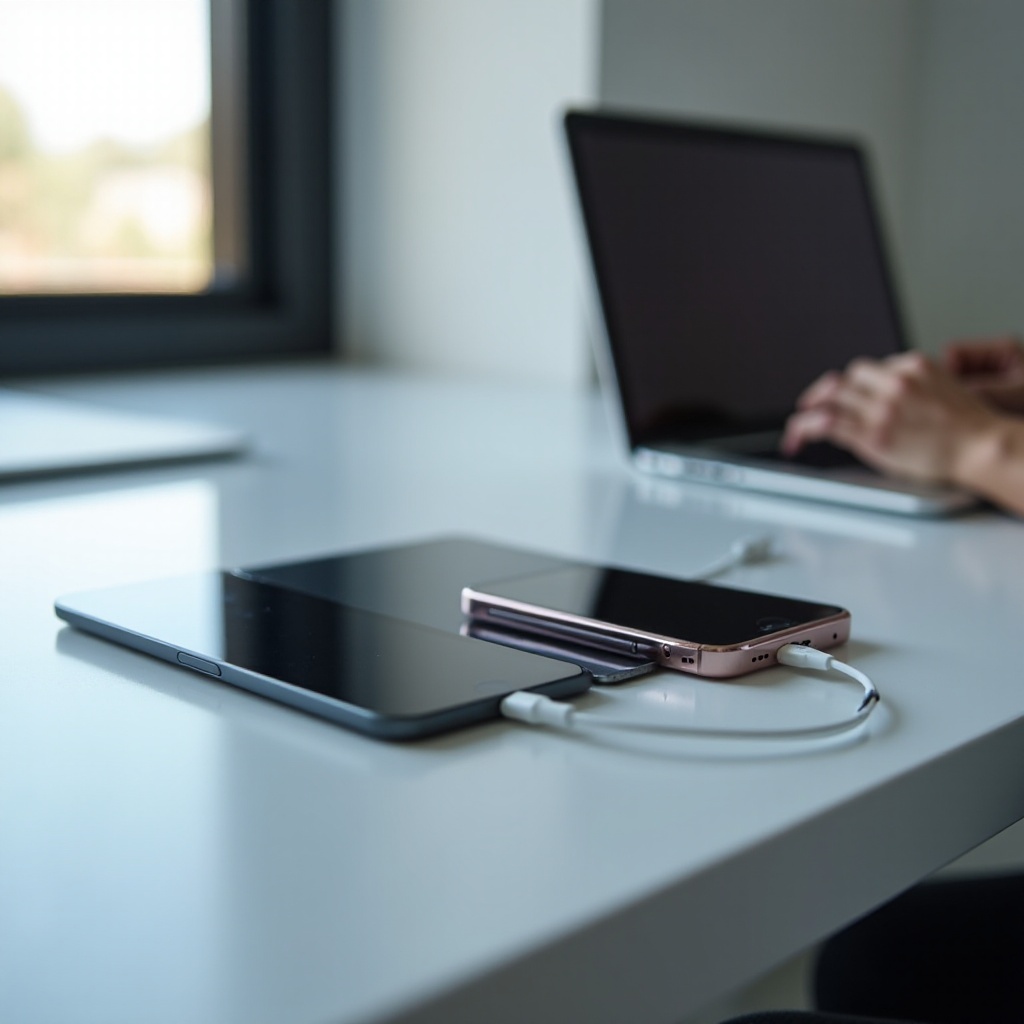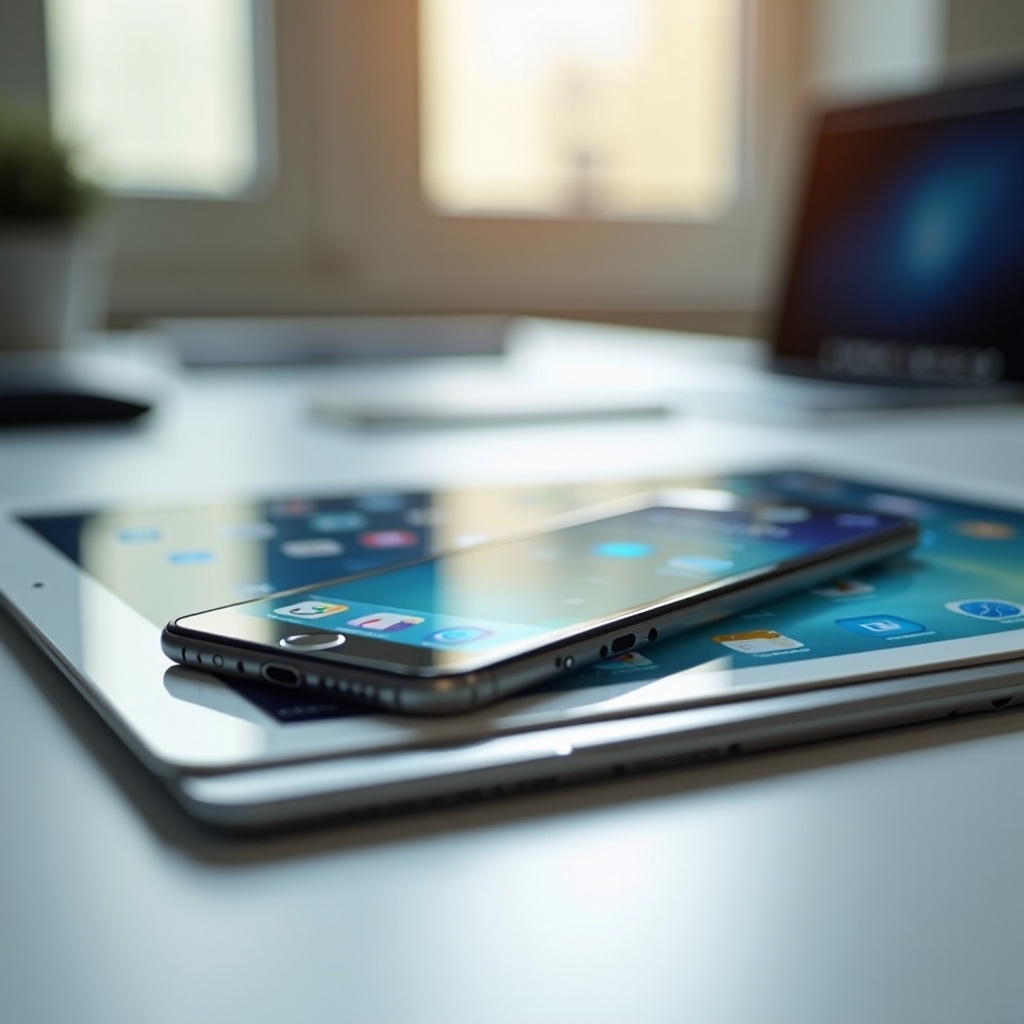Introduction
Syncing your iPad and iPhone allows you to access your data seamlessly across both devices. This means the photos taken on your iPhone appear automatically on your iPad, and the notes you jot down on your iPad show up on your iPhone without any extra effort. However, when these two devices fail to sync, it can be frustrating. This article will guide you through some common reasons for syncing issues and offer troubleshooting tips and detailed solutions to get your devices back in sync.

Top Reasons Why Your iPad and iPhone Are Not Syncing
Understanding why your iPad and iPhone are not syncing can be a significant first step in troubleshooting the issue. Several factors can interfere with the smooth syncing of data:
- Different Apple IDs: If you are using different Apple IDs on your iPad and iPhone, syncing will not occur.
- Outdated iOS: Running different or outdated versions of iOS on your devices can hinder the syncing process.
- Network issues: Poor or inconsistent internet connectivity can cause syncing interruptions.
- iCloud Settings: Incorrectly configured iCloud settings can prevent synchronization.
- Software Glitches: Minor software bugs can occasionally cause syncing issues between your devices.
Quick Troubleshooting Tips
Before diving into detailed solutions, a few quick troubleshooting tips can resolve minor syncing hitches:
- Restart Devices: Sometimes, a simple restart can fix the issue. Turn off both iPad and iPhone, then power them back on.
- Check Wi-Fi Connection: Ensure both devices have a strong and stable Wi-Fi connection.
- Ensure Sufficient iCloud Storage: If your iCloud storage is full, new data won’t sync.
- Sign Out and Sign Back In: Sign out of iCloud on both devices, then sign back in.
These quick fixes can often resolve minor syncing problems. However, if the issue persists, follow our detailed solutions below.

Detailed Solutions
Ensuring Devices Are Using the Same Apple ID
To sync data, both your iPad and iPhone must use the same Apple ID.
- Check Apple ID on iPhone:
- Navigate to Settings.
- Tap on your name at the top (Apple ID, iCloud, iTunes & App Store).
-
Confirm the Apple ID being used.
-
Check Apple ID on iPad:
- Follow the same steps as above.
If the Apple IDs do not match, sign out and sign in again with the correct Apple ID.
Updating iOS to the Latest Version
Ensure that both devices are running the latest version of iOS.
- Check for Updates on iPhone:
- Go to Settings > General > Software Update.
-
If an update is available, tap Download and Install.
-
Check for Updates on iPad:
- Go to Settings > General > Software Update.
- Update if necessary.
By keeping both devices updated, you ensure compatibility and reduce the risk of software bugs causing sync issues.
Resetting Network Settings
Network settings can sometimes interfere with syncing.
- Reset Network Settings on iPhone:
- Go to Settings > General > Reset > Reset Network Settings.
-
This will reset Wi-Fi networks, passwords, and VPN settings.
-
Reset Network Settings on iPad:
- Follow the same steps as on the iPhone.
After resetting, reconnect to your Wi-Fi network and check if the syncing issue is resolved.
Checking iCloud Settings
Verify that iCloud is set up correctly on both devices.
- Check iCloud Settings on iPhone:
- Go to Settings > [Your Name] > iCloud.
-
Ensure that the options you want to sync, such as Photos, Contacts, and Notes, are turned on.
-
Check iCloud Settings on iPad:
- Follow the same steps as on the iPhone.
Using iTunes/Finder for Syncing
If iCloud syncing isn’t working, you can use iTunes (on Windows or macOS Mojave and earlier) or Finder (on macOS Catalina and later) for manual syncing.
- Connect iPhone and iPad to Computer:
- Using a USB cable, connect your iPhone first, then open iTunes/Finder and select your device.
-
Now, connect your iPad.
-
Sync via iTunes/Finder:
- For iTunes: Click on the device icon, then select what kind of content you want to sync.
- Ensure you click Apply.
- For Finder: The process is similar, and you can select each device in the sidebar.
This method allows you to manually control and ensure your data syncs correctly between devices.
Additional Tips
Here are some extra tips to help with the syncing issue:
- Regular Backups: Regularly back up your devices to prevent data loss and facilitate easier syncing.
- Check Apple System Status: Occasionally, Apple’s iCloud services face outages. Visit the Apple System Status page to check if iCloud services are down.
- Contact Apple Support: If you’ve tried all the steps and nothing works, reach out to Apple Support for personalized help.

Conclusion
Fixing syncing issues between your iPad and iPhone involves several steps, from simple troubleshooting tips to more detailed solutions. By ensuring your devices use the same Apple ID, keeping your iOS up to date, resetting network settings, correctly setting up iCloud, and using iTunes or Finder for manual syncing, most syncing problems can be resolved. Following these steps ensures your data stays up-to-date across all your Apple devices, providing a seamless user experience.
Frequently Asked Questions
Why won’t my iPad and iPhone sync over Wi-Fi?
This is usually due to different Apple IDs, outdated iOS versions, or poor Wi-Fi connectivity. Ensure both devices are on the same Apple ID, updated to the latest iOS, and connected to a stable Wi-Fi network.
How can I manually sync my iPad and iPhone using iTunes/Finder?
Connect both devices to a computer. Open iTunes (for Windows or macOS Mojave earlier) or Finder (macOS Catalina and later), select the devices, and choose the content you want to sync.
What should I do if my iPhone and iPad still won’t sync after trying these solutions?
If the issue persists, consider contacting Apple Support for personalized troubleshooting and further assistance.